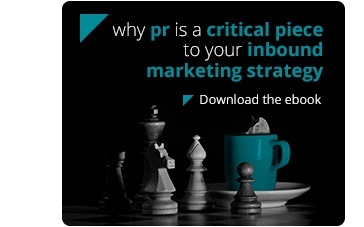CMO Pitfall: Communicating the Real Value of Your Marketing Efforts

Whether your company relies on goals and progress monthly, quarterly or yearly – today’s marketers have to be their brands’ best advocate. To communicate effectively, they must understand the metrics behind campaigns and why the metrics will lead to an outcome and revenue. But it’s not so easy. As a matter of fact, PAN’s recent Content Fitness Report indicated that out of 100 marketers surveyed, 76 percent of them lacked the confidence to effectively report content program measurement. Imagine that: One of the most critical pieces to your customer’s journey, and we still struggle with a return on content?
Progress and program performance will always be an important “success indicator” for brand leaders and CMOs. While integrated marketing and PR campaigns are unfolding, marketing teams can begin to clearly show how their department’s efforts are impacting the brands’ equity and reputation. Your analytics and assessment should always reflect how your team’s performance via channels (shared, owned, earned or paid) are driving customer traffic; expanding share of voice versus competitors; impacting conversions across the customer lifetime value (CLV) year-over-year; and helping to grow revenue by driving qualified leads to your sales team.
Above all else, the CMO is responsible for turning insights into actions during these meetings. This can be a challenge for marketers who are used to simply outlining metrics and direct progress. Taking your analysis one step further can show executives how your team is contributing to the bottom line and what’s on the horizon.
Below are a few ways to begin reassessing your executive team communication strategy:
1. Evaluate your digital channels. If you are pursuing an integrated marketing and PR strategy then you are likely seeing website traffic coming from various sources: earned media, social media, influencer programs, paid, content, SEO efforts and email campaigns. Highlight the channels contributing to the highest ROI. This will be an indicator as to where your marketing team should be deploying time and future budget. Before you start measuring your channels, however, identify success metrics. Improved customer retention? Qualified leads? Sales? Once this is determined, your marketing team can begin analysis and recommendations for improving campaigns.
2. Highlight your content campaigns. At the beginning of the quarter, you likely planned content campaigns with specific objectives and goals for each. Now it’s time to evaluate which campaigns met their initial goals or why they fell short. Analyze not only the channel performance within each campaign, but also which message(s) resonated with your target buyer persona(s). Showcasing successfully executed campaigns will spur new ideas along the same targeted pathways and help keep the customer engaged with your product or services.
3. Highlight advocacy programs. Whether your team is launching or executing on customer or employee advocacy programs, explain why these strategies are going to be instrumental for completing the marketing plan. Customer advocacy programs are gaining popularity for CMOs as emphasis is placed on CLV. Now is the time to remind brand leaders that customers can be your most strategic asset in gaining referrals, building word of mouth and connecting with content. By implementing a reward system for these efforts, it will encourage and foster customer engagement and brand advocacy. If you’re looking for an effective influencer marketing tool, I recommend trying out HYPR. This platform has profiles for over 10 million influencers across every major social channel. Users can search for influencers by name or by audience demographics, allowing marketers to find the best possible social influencers available for any campaign. Having access to this type of audience insight is critical to running a successful influencer advocacy program.
4. Analyze your competitors. It’s important to take a deeper dive into what competitor strategies have been successful. This is where your martech stack can be valuable. Listening tools like NetBase provide specific social listening metrics to help determine where you have the most impactful SOV versus where your competitors are gaining engagement, traffic and brand awareness. Highlight these findings along with strategic actions to take your company’s social brand awareness to the next level.
Other martech tools like TrendKite can be of use when analyzing your brand’s earned efforts against your competitors. Did your competitors launch a new product? Enter a new region? Win some major awards? No matter the announcement, call out the traffic source and where the impact fell. This will lead to specific action items for your PR and earned effort strategy in the future quarter or planning period.
5. End with a holistic view to your integrated approach. After outlining each aspect of your integrated approach – channels, campaigns and competitors – report on your goal for each of your team’s efforts – content marketing, PR, social media and creative. Speak to demand gen integration, the overarching story embedded within each campaign and how these efforts are being effectively amplified and leveraged for maximum ROI. Address to executive members how each service supports one another along the buyer journey. While you may want to tweak your budget accordingly, keeping an integrated approach to marketing and PR will only further solidify your brand’s message to your target audience.
Communicating the value of integrated marketing and PR can be a challenge for some CMOs, but there are resources that can help. First, invest in the right martech tools to get an accurate depiction of your given industry. Second, don’t rely solely on your internal marketing team to get this integrated analysis. Remember that your agencies should be providing strategic measurement, analysis and future counsel that will help foster this discussion to executives. For a deeper dive into an integrated marketing and PR approach, I’d recommend downloading PAN’s eBook, ‘Why PR Is a Critical Piece to Your Inbound Marketing Strategy.’
Looking for more from the CMO Pitfall series? Make sure you check out:
- 5 Digital Transformation Barriers
- Taking Action with Measurement & Analytics
- What are the 3 Factors that Drive Success?
- How to Crank Up Your Personalized Content
 Source:
Source: 